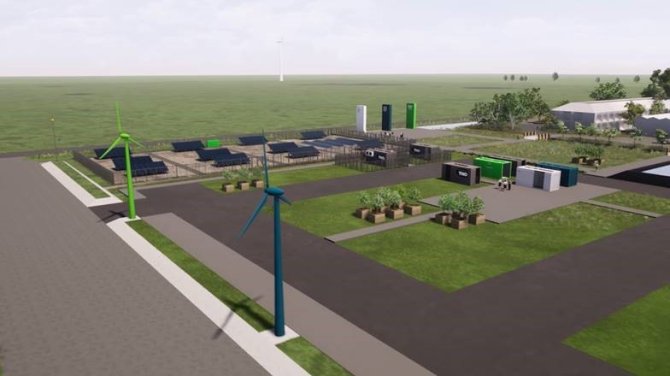
Project
Switch: integrating renewable energy in the electricity grid in practice
Capacity problems in the public electricity grid are making it increasingly problematic to integrate renewable energy generated on land and at sea in this grid. The energy transition does not only require the expansion of the grid, but also more capacity to store solar and wind energy. But how can this be achieved? In the Switch project in Lelystad, ACRRES and TNO are working together to find innovative solutions.
The development of a renewable energy system is hampered by the limitations of the public electricity grid. Many farmers generate energy with solar panels or wind turbines, but they are often unable to pass unused energy to the grid because of the limited capacity of the local electricity network. The result is that wind turbines and solar parks increasingly cannot be connected to the grid, removing an important incentive for farmers and other parties to start generating their own sustainable energy.
The solution to this is storage, so that the renewable energy supply becomes more flexible. Electricity can be stored in batteries, hydrogen or other energy carriers, but this requires efficient coordination between solar and wind energy production on the one hand and storage in batteries and hydrogen cells on the other. ACRRES, Wageningen University & Research’s centre for research into renewable energy and green resources, has joined forces with TNO (Netherlands Organisation for Applied Scientific Research) to achieve this in the Switch project, a test site in Lelystad.

Six small wind turbines are combined with solar energy, electrolysis (hydrogen generation) and a battery system to run practical simulations and test applications that can subsequently be scaled up, for example to large wind farms on and offshore. The Switch site can test and demonstrate both Smart Grid and Smart Energy solutions.
Hydrogen has much potential as a ‘missing link’ in the energy transition, but there are still some important questions to be answered. ACRRES is studying how farmers can convert and store sustainable energy on their farms in the form of hydrogen. This volatile gas can serve as an energy carrier that farmers can use as a source of power for their farms and as a clean fuel for forklifts, tractors and lorries. This energy storage solution will contribute to making the energy supply and the agricultural sector more sustainable.
- Unfortunately, your cookie settings do not allow videos to be displayed. - check your settings